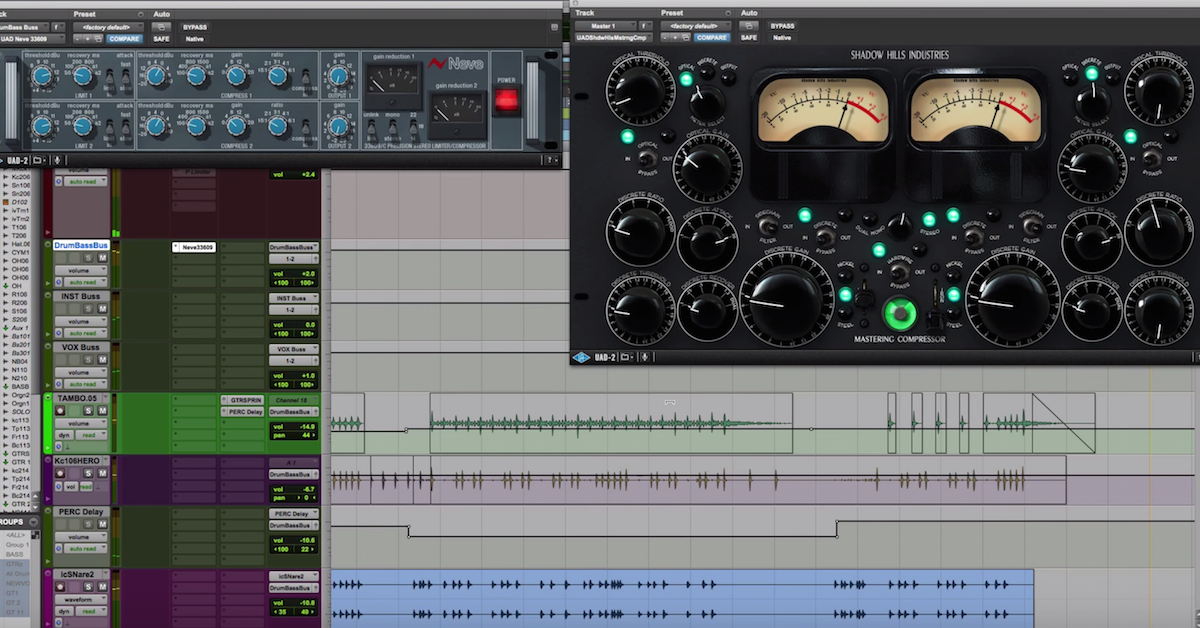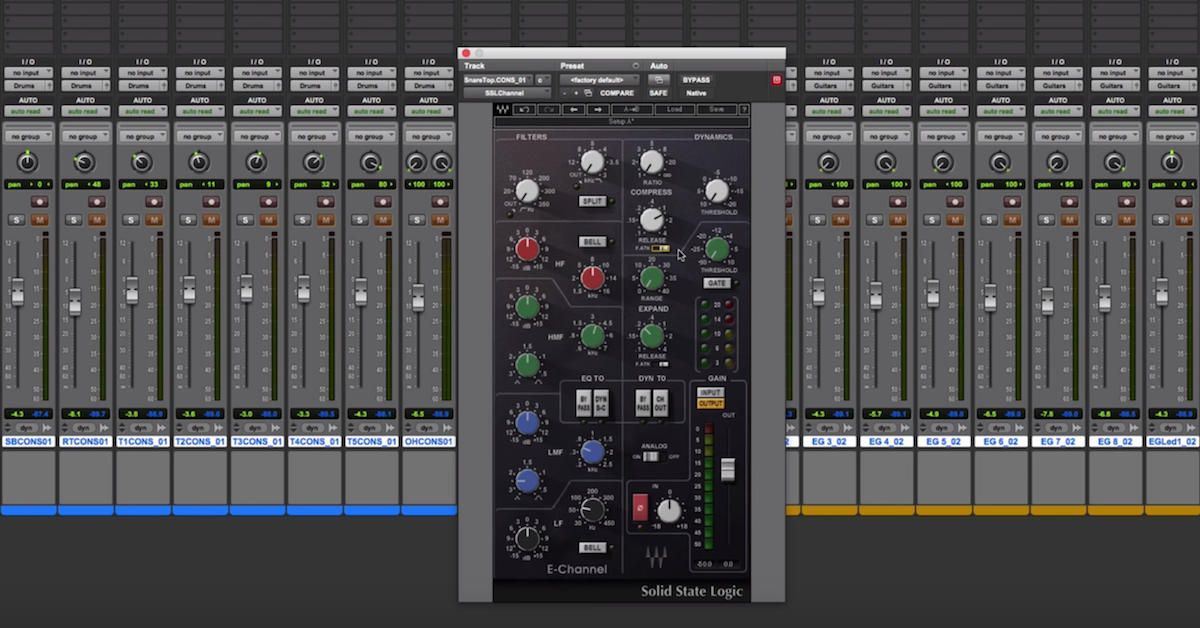Compression Basics: 1176 into LA-2A on Vocals + CL 1B on Keyboards
Today is the first in a five part video series on compression. We recently released an article on the five things to listen for when using a compressor, and first up is one of the most common uses for compressors, which is the control of dynamics and taming peaks.
So firstly, let’s take a look and listen to this vocal performance. We’ve got a good amount of dynamic range, a relatively quiet level in the verse. It’s a little bit louder as we enter the chorus, and then at the end of the chorus, we have a climax in amplitude, so to speak.
Let’s take a listen.
[mix]
Let’s move forward to the chorus.
[mix]
So the goal here is to bring the level of the verses a little bit closer to the level in the choruses, and to also — there are a couple of lines that really poke out in my mind, particularly, “Wrap my” just seems a little bit like it’s sticking out more than the rest of the lines.
So what we’re going to do is apply the classic 1176 into an LA-2A technique.
Let’s activate the 1176. I’ve got a pretty fast attack and fast release time, and I’m going to set my input and output to a point where the loudest parts of the vocal performance are brought down, but the quietest parts are not affected.
Let’s take a listen to the verse.
[mix]
Let’s move forward to the chorus.
[mix]
Okay, so as you can hear, when the vocal gets really loud and expressive, we have compression being applied.
What you’re hearing now is only a piece of the final puzzle. It does sound a little bit quiet. We are going to use the LA-2A — the gain feature here — to bring up the overall level and use the peak reduction — I’m going to set it to a point where we have about — between one and up to three dB at any given moment.
Let’s take a listen with the two together.
[mix]
And let’s move forward.
[mix]
Alright, so what we’re hearing is definitely a smoother, more even vocal performance. Sometimes when you have a lot of compression applied, sibilant sounds, like this right here, I believe it’s a D, let’s take a listen.
[mix]
I’ll show you what I did.
I automated volume and clip gain, because sometimes, when you apply a lot of compression to a source, sibilant sounds become extra harsh.
[mix]
That really pops out.
So what I’m doing is zooming in a little bit, using clip gain to bring it down about five dB, and then volume automating down a couple dB as well, and it sounds smoother.
[mix]
Alright, so as you can hear, this is definitely a tried and true technique for a reason. We have the 1176 taming the highest of peaks, and the LA-2A giving some general compression and overall smoothness to the signal the entire time.
Next, I’m going to show you how to use compression to even out the dynamics of a keyboard part.
Let’s take a listen to this with no compression whatsoever.
[mix, no compression]
Okay, it sounds nice, but there are a couple of notes, a couple of phrases that seemed to poke out a little bit to me. They stick out of the mix and sound less pleasant in comparison to everything else.
In particular, right here and right here just seem to pop out a little bit.
So I’m going to use compression to tame those transients. Let’s take a listen.
We’ve got the TubeTech CL 1B, which is a collaboration between Softube and Universal Audio. It’s one of my go-to compressors, because it’s versatile and it works quickly.
Let’s take a listen.
[mix]
So if we pay attention to the settings, I’ve got a relatively fast attack. I want some of the transient to be allowed through the compressor, but I want to catch it pretty quickly.
Let’s take a listen to what it would sound like if I had a slow attack.
[mix, slow attack on compressor]
And if I had an all the way fast attack…
[mix, fast attack]
It starts to sound a little bit pumpy and unnatural, so I dialed in a setting I was happy with.
I’m using a relatively slow release for the purpose of — if you look at the waveform, the sustain and the decay happen a little bit too quickly, so I wanted to even it out and make the note seem like it sustained a little bit more, so I used a pretty slow release to help emulate that effect.
I’ve got about a five to one ratio, and the threshold and gain are both set to the default settings, whatever they were when I loaded up the plug-in, which is one of the reasons I like this so much is it just works so quickly.
Alright, this has been Ian Vargo with The Pro Audio Files, with the first in a five part video series on compression.
If you have any questions or comments, make sure to get in touch, and also check out Coat of Love by Sunny Love and the Moon Parade on Apple Music, Spotify, and all of those other streaming services.
Thanks!





